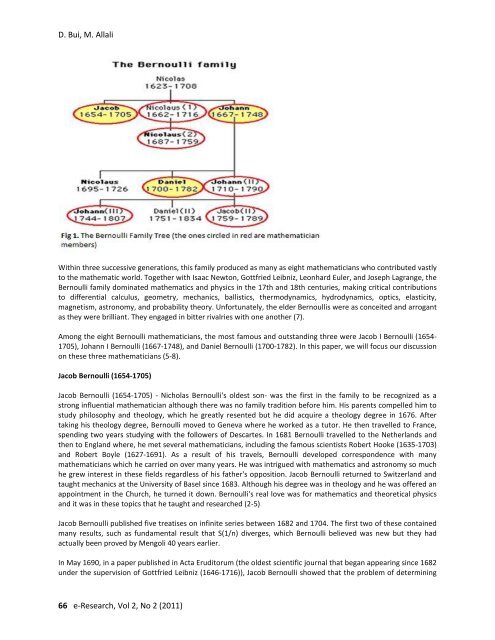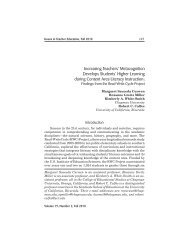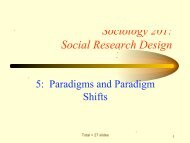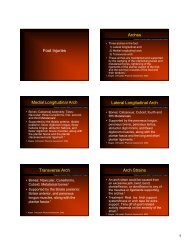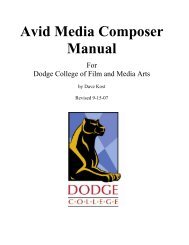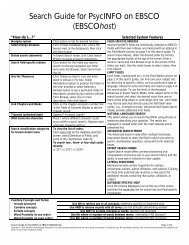e-Research: A Journal of Undergraduate Work - Chapman University
e-Research: A Journal of Undergraduate Work - Chapman University
e-Research: A Journal of Undergraduate Work - Chapman University
You also want an ePaper? Increase the reach of your titles
YUMPU automatically turns print PDFs into web optimized ePapers that Google loves.
D. Bui, M. Allali<br />
Within three successive generations, this family produced as many as eight mathematicians who contributed vastly<br />
to the mathematic world. Together with Isaac Newton, Gottfried Leibniz, Leonhard Euler, and Joseph Lagrange, the<br />
Bernoulli family dominated mathematics and physics in the 17th and 18th centuries, making critical contributions<br />
to differential calculus, geometry, mechanics, ballistics, thermodynamics, hydrodynamics, optics, elasticity,<br />
magnetism, astronomy, and probability theory. Unfortunately, the elder Bernoullis were as conceited and arrogant<br />
as they were brilliant. They engaged in bitter rivalries with one another (7).<br />
Among the eight Bernoulli mathematicians, the most famous and outstanding three were Jacob I Bernoulli (1654-<br />
1705), Johann I Bernoulli (1667-1748), and Daniel Bernoulli (1700-1782). In this paper, we will focus our discussion<br />
on these three mathematicians (5-8).<br />
Jacob Bernoulli (1654-1705)<br />
Jacob Bernoulli (1654-1705) - Nicholas Bernoulli's oldest son- was the first in the family to be recognized as a<br />
strong influential mathematician although there was no family tradition before him. His parents compelled him to<br />
study philosophy and theology, which he greatly resented but he did acquire a theology degree in 1676. After<br />
taking his theology degree, Bernoulli moved to Geneva where he worked as a tutor. He then travelled to France,<br />
spending two years studying with the followers <strong>of</strong> Descartes. In 1681 Bernoulli travelled to the Netherlands and<br />
then to England where, he met several mathematicians, including the famous scientists Robert Hooke (1635-1703)<br />
and Robert Boyle (1627-1691). As a result <strong>of</strong> his travels, Bernoulli developed correspondence with many<br />
mathematicians which he carried on over many years. He was intrigued with mathematics and astronomy so much<br />
he grew interest in these fields regardless <strong>of</strong> his father's opposition. Jacob Bernoulli returned to Switzerland and<br />
taught mechanics at the <strong>University</strong> <strong>of</strong> Basel since 1683. Although his degree was in theology and he was <strong>of</strong>fered an<br />
appointment in the Church, he turned it down. Bernoulli's real love was for mathematics and theoretical physics<br />
and it was in these topics that he taught and researched (2-5)<br />
Jacob Bernoulli published five treatises on infinite series between 1682 and 1704. The first two <strong>of</strong> these contained<br />
many results, such as fundamental result that S(1/n) diverges, which Bernoulli believed was new but they had<br />
actually been proved by Mengoli 40 years earlier.<br />
In May 1690, in a paper published in Acta Eruditorum (the oldest scientific journal that began appearing since 1682<br />
under the supervision <strong>of</strong> Gottfried Leibniz (1646-1716)), Jacob Bernoulli showed that the problem <strong>of</strong> determining<br />
66 e-<strong>Research</strong>, Vol 2, No 2 (2011)


